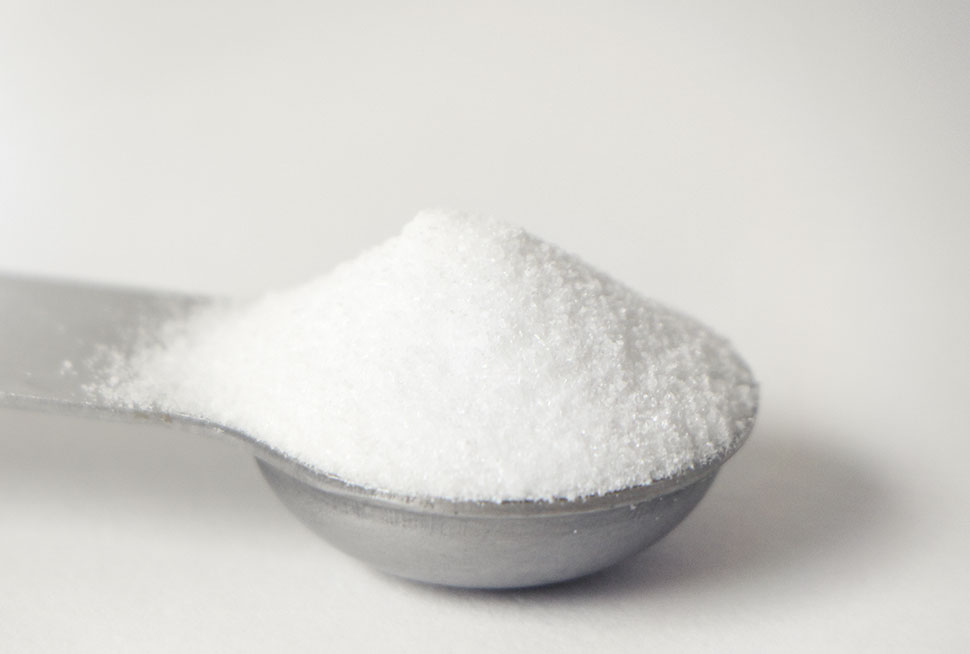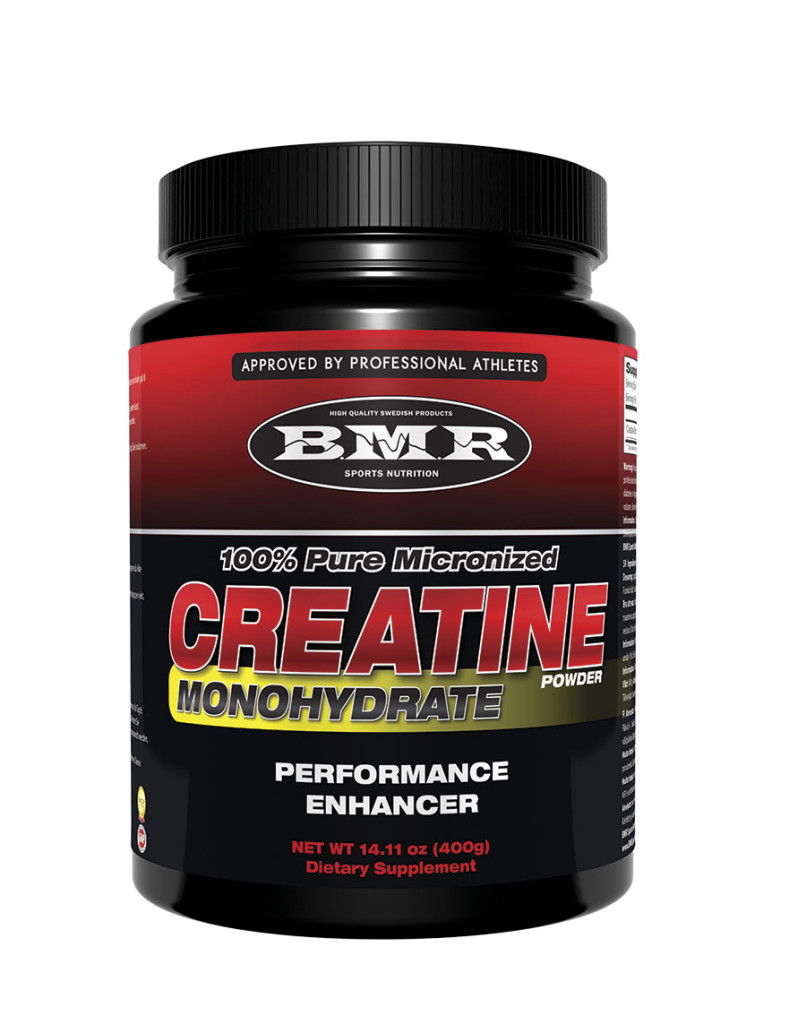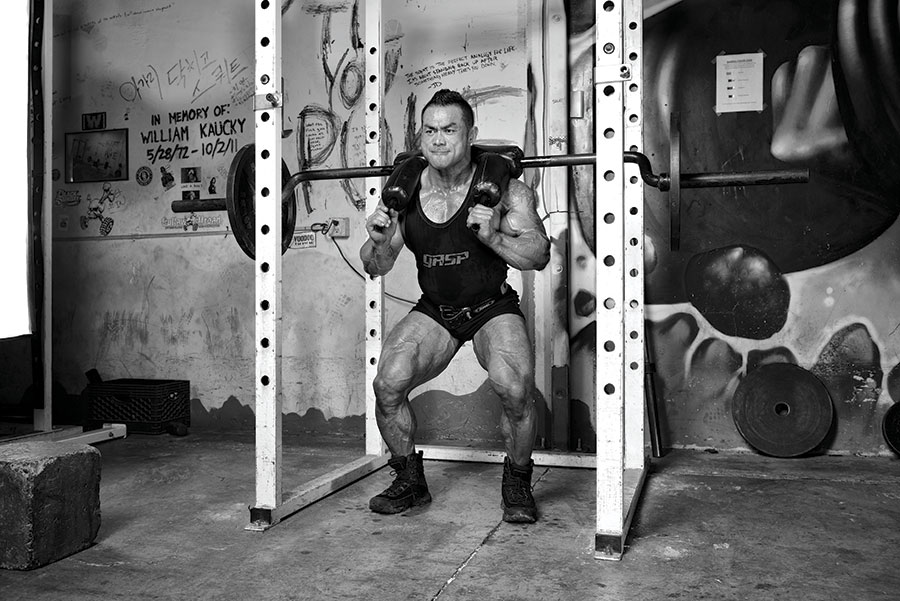


When you walk in to any nutrition store, one of the supplements that is always recommended when trying to increase muscle mass is creatine. To give you an idea of its popularity, creatine is estimated to generate 100-million dollars this year in sales. For the most part, we know what creatine does and how it works. New research has recently explored new benefits and the effectiveness of different forms of creatine when it comes to impacting aesthetics and athletic performance.
Creatine is a nonessential nutrient that is synthesized in our bodies and helps supply energy to our cells, muscle cells in particular. It is the primary fuel for short, high-intensity exercise. Any exercise or movement that lasts up to 10 seconds (some research says 30 seconds) uses the phosphocreatine system. Within this system, creatine has a phosphate added to it to create phosphocreatine. Phosphocreatine then has the ability to donate this phosphate group to create ATP, which is the fuel source for our cells.
Since creatine is a mediator in energy production, its use as a supplement has been widely researched. Over 500 studies have been conducted on the effectiveness of creatine as a supplement, and more than 70 percent show significant improvements in performance. With short-term supplementation, research shows that creatine increased maximal power, strength, and repeated sprint performance. Additionally, long-term studies have shown greater physique benefits, most notably increased lean mass.
 Supplementing with creatine can even reduce fatigue. If there is more creatine available in the muscles, there can potentially be more phosphocreatine available to create energy. Another way it can reduce fatigue is by acting as a buffer. When lifting weights, there is an increase in hydrogen ions in the muscles, which cause “the burn” as you fatigue. However, there is a reaction in the phosphocreatine system that consumes a hydrogen ion. This staves off the burning sensation that forces you to put down the weight. So less burn means you can go longer in your set and potentially lead to shorter recovery times between sets.
Supplementing with creatine can even reduce fatigue. If there is more creatine available in the muscles, there can potentially be more phosphocreatine available to create energy. Another way it can reduce fatigue is by acting as a buffer. When lifting weights, there is an increase in hydrogen ions in the muscles, which cause “the burn” as you fatigue. However, there is a reaction in the phosphocreatine system that consumes a hydrogen ion. This staves off the burning sensation that forces you to put down the weight. So less burn means you can go longer in your set and potentially lead to shorter recovery times between sets.
Another benefit to creatine supplementation is greater expression of IGF-1, an important hormone that dictates muscle hypertrophy. It activates a specific metabolic pathway (mTOR), which is responsible for protein synthesis. Although no studies have been able to show directly that this is the cause for greater muscle mass in individuals who supplement with creatine, it’s likely that this is one of the possible mechanisms by which creatine helps you get jacked.
How To Use It
The most common way to take creatine is to load it for about a week, using five-gram doses spread four times throughout the day. Once the muscle becomes saturated, a maintenance dose of three to five grams per day is used. This causes a rapid increase in creatine concentration and is useful for someone who has a competitive event in the coming days.
Another popular method simply employs three to five grams of creatine per day from day one. Although there is no rapid saturation in the muscles, saturation will occur after about 28 days. This is relatively cheaper and less likely to lead to GI distress and weight gain. A third method is supplementing according to bodyweight, which is believed to produce a more precise dose since muscle mass is partly responsible for absorption of creatine. If this is your chosen method, a dose of 0.3 grams per kilogram of bodyweight is recommended for loading and .029 grams per kilogram of bodyweight for maintenance.
Because creatine supplementation does cause weight gain, it’s something that physique competitors should approach carefully. But recent work has shown that if you supplement relative to your bodyweight, you may still be able to receive the benefits of creatine without the added pounds. In fact, supplementing with as little as .03 grams per kilogram per day can still lead to improvements in performance.
When co-ingested with carbohydrates and proteins, it appears to be absorbed by the tissues better due to specific transporters that are activated. So 50 to 80 grams of carbs and/or 30 to 50 grams of protein will help get more creatine in your muscles. Lastly, there is no need to cycle on and off creatine. Recent research has shown the receptors and endogenous synthesis (what we make in our bodies) are not negatively impacted. But if you do wish to cycle, take between four and six weeks off. IM
NEXT UP: Types Of Creatine





















You must be logged in to post a comment Login